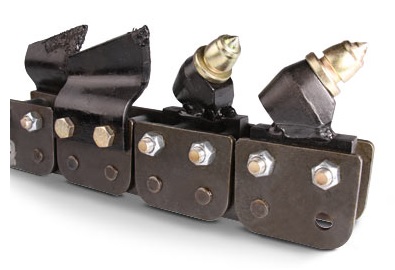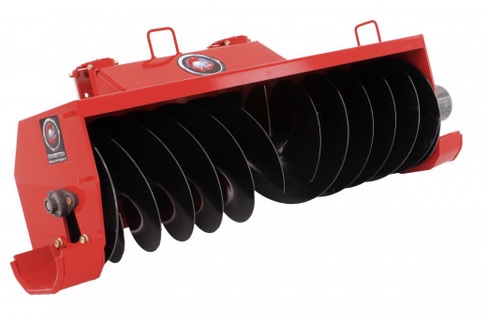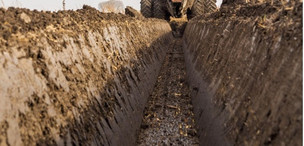Brush and Undergrowth: Why Clearing It Matters, Tips, Tricks, and Advice
Posted by Lee Padgett on 21st Feb 2023
Whether there’s a large, wooded lot adjacent to your warehouse or your landscaping crew is responsible for maintaining large open spaces on behalf of another landowner, one critical aspect of wildland management that you can’t overlook is brush management.
Brush management refers to the process of maintaining a desirable level of undergrowth among an understory or in a sparsely wooded field. How much brush is too much will depend on the unique needs of the situation, but for many landowners, the answer is a simple “none.”
In this post, we’re going to explore some of the reasons that keeping your land clear and free of brush and undergrowth is important, as well as how to go about it.
Why Keeping Land Clear of Undergrowth Is Important
There are many reasons that keeping land clear of undergrowth and brush can be beneficial, though again the unique advantages may be specific to the situation.
One of the most common reasons for keeping land clear of brush and overgrowth is that undergrowth impedes access to, from, and generally through a property. Whether the property in question is traversed by trails or simply stands between one location and another, excess undergrowth can make it difficult to get from point A to point B.
Excess scrub and brush also adversely impacts property value. All things considered, most properties are simply worth more when they appear nicely manicured and aren’t terribly overgrown
In addition to these (basically aesthetic) reasons, there are numerous functional reasons to keep your land clear of undergrowth.
One is that undergrowth harbors a wide range of vermin, such as rats, rabbits, foxes, coyotes, raccoons, and opossums. Maintaining healthy populations of animals like these might be beneficial to hunters and outfitters, but for others, its a nuisance, as these animals can transmit diseases and cause property damage.
One other reason to keep your land clear of excess scrub and brush is that dry, thick, tangled brush often constitutes a massive risk of wildfire. Overgrown land is at a much greater risk of burning (and spreading a wildfire) than well-kept, cleanly maintained land.

How to Keep Your Land Clear and Free of Brush and Undergrowth
There are several ways you can help prevent land from becoming overgrown in the first place. Even so, once you clear it, there are things you can do to help prevent undesired vegetation from coming back with a vengeance.
The first bit of advice we can offer is to do a thorough job the first time around. Some hardy wild shrubs can’t be killed by simply mowing them down. Even if you cut them once over with a skid steer articulating brush cutter, if you don’t get them at the root, they’re likely to come back.
For this reason, reworking cleared land with a tiller, ripper, root rake or soil conditioner can help ensure that any remaining root systems are ripped up, shredded, and then turned over. Not only will this delay the resurgence of weeds and scrub, but it will also enrich the soil with nutrients.
Planting the land with desirable species can also discourage the growth of weeds. For instance, seeding with grass can help crowd out competing weeds; planting with trees, and progressively clearing, will, over time, create a canopy that shades the ground and discourages undergrowth. That is a long-term strategy, however.
Another strategy is to clear the land and then create a burn pile. This will not prevent the land from becoming overgrown again, but it will eliminate the fire risk and enrich the soil. Also, for land that was densely overgrown, it will help prevent the same land from reaching the same levels of undergrowth for a few years.

Skid Steer Attachments That Are Useful for Clearing Land
Spartan Equipment produces a wide range of different skid steer attachments that are useful for clearing land of scrub and brush. Some of the most practical are the following:
- Skid steer articulating brush cutters: Skid steer articulating brush cutters are excellent at removing brush and thick, woody debris. They are particularly useful after large trees have been removed from an area.
- Skid steer mulchers: Mulchers, like skid steer articulating brush cutters, are perfect for clearing land of thick brush and debris and recycling it back into the soil.
- Soil conditioners: Soil conditioners are top skid steer attachments for leaving a fine, even soil surface that’s ready for planting, after the brush has all been removed and ripped up.
- Root grapples: Root grapples are great for ripping up larger roots and for dragging cut vegetation together for the purposes of consolidating burn piles.
- Skid steer ripper attachments: When roots remain behind, rippers are great for combing through the soil and pulling out anything that remains.
- Tillers: Tillers, like rippers, are great for conditioning the soil and recycling cut vegetation back into it.
- Tree saws and tree shears: If you’re going to clear your land not only of underbrush but entirely, tree shears and tree saws are the perfect first step to land clearing. They can help you remove the larger stuff before you go through the rest with a mulcher or brush cutter.
Oftentimes a job well done comes down to the quality of the equipment and attachments you use to execute it. All Spartan Equipment skid steer attachments are made in the United States using American steel and many are covered by generous warranties. For more information on our skid steer attachments for sale, get in touch with us at 1-888-888-1085.


